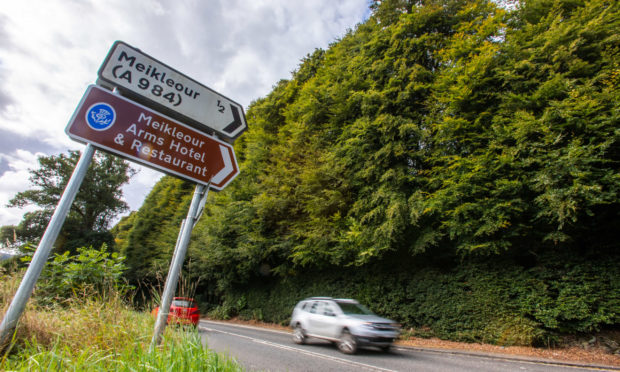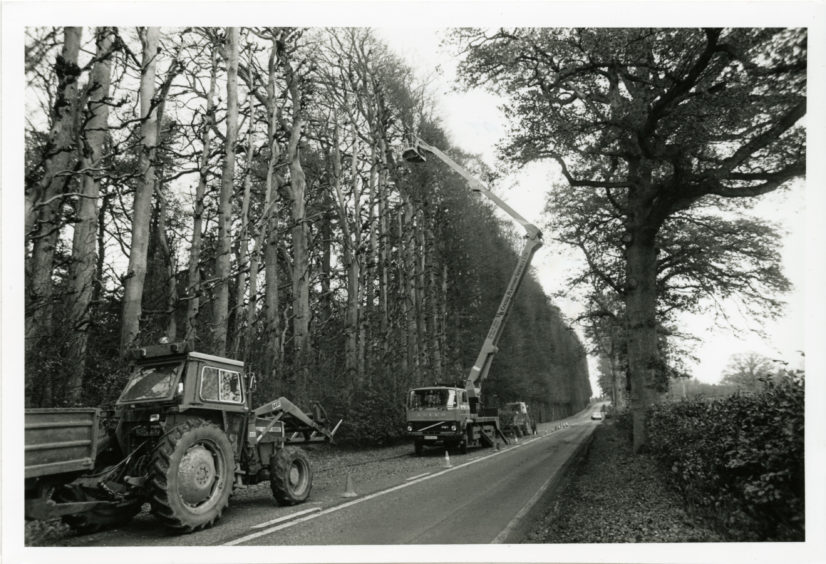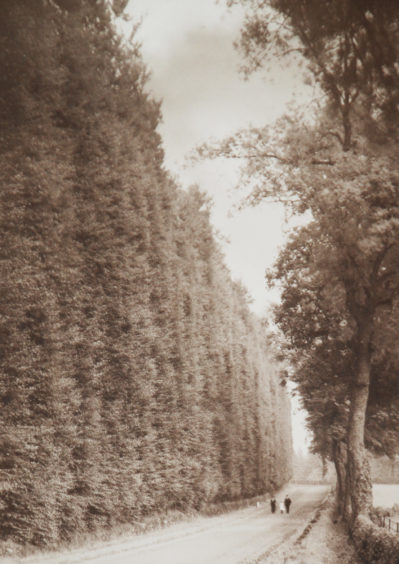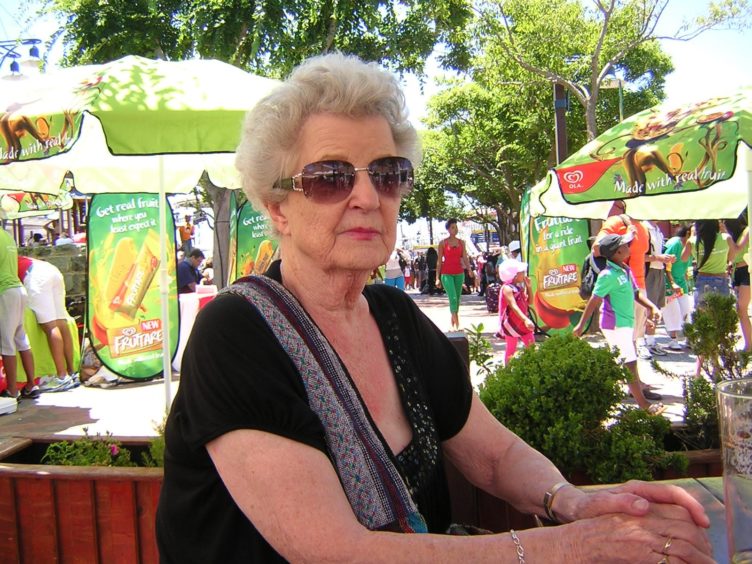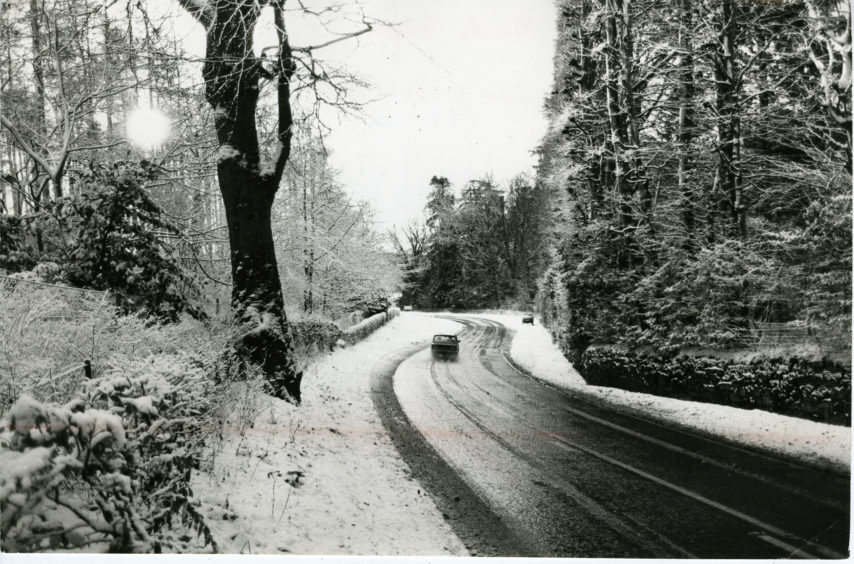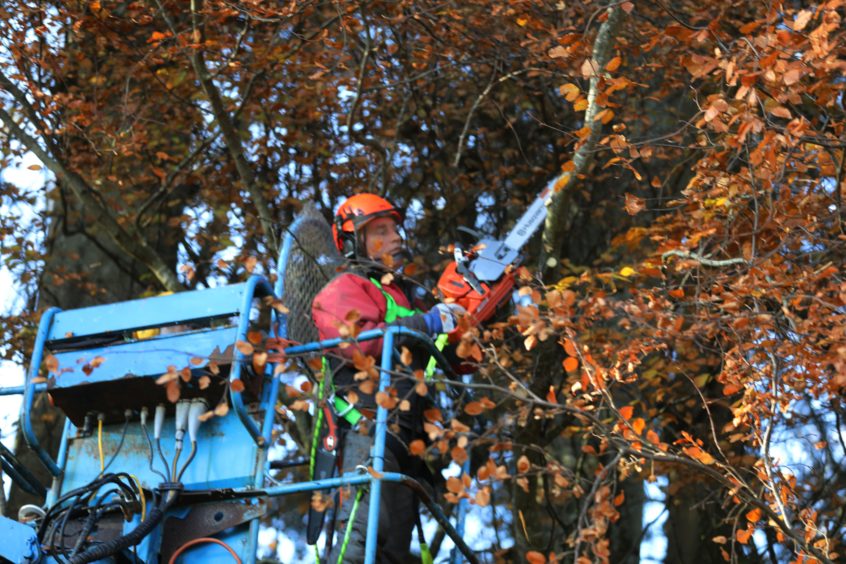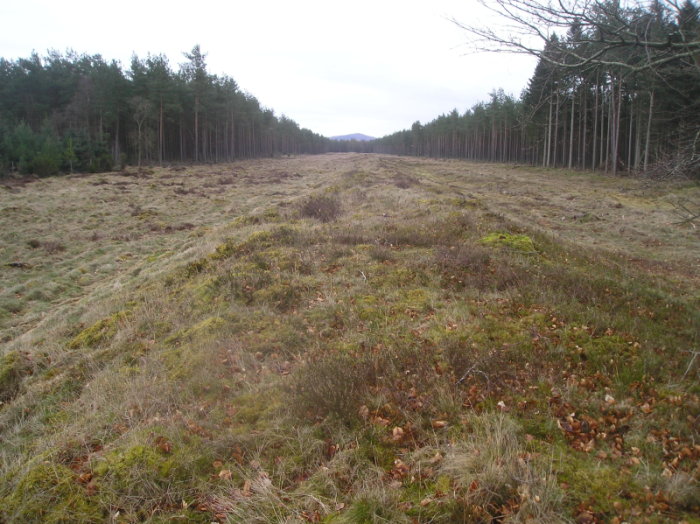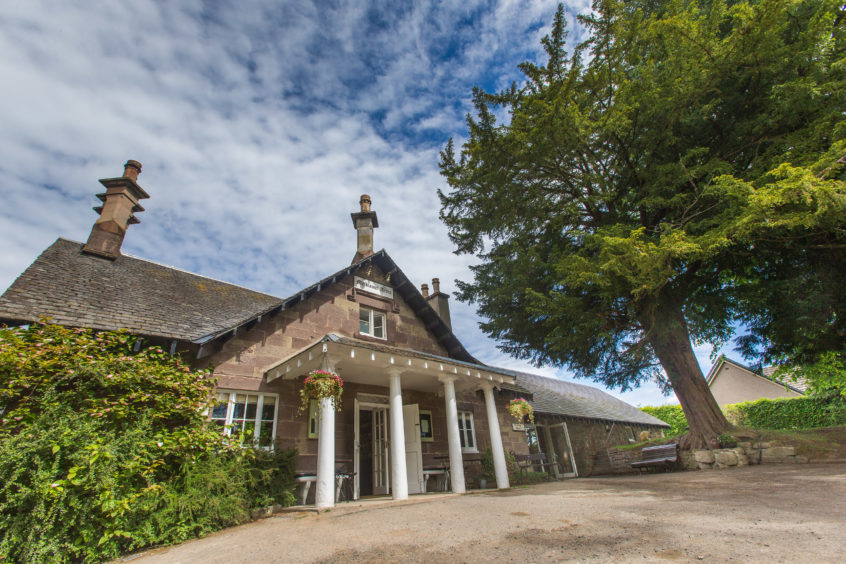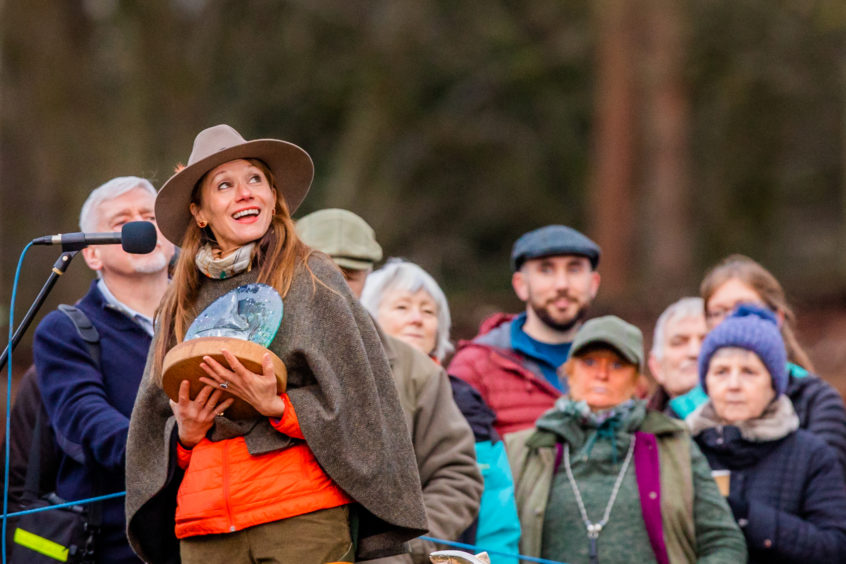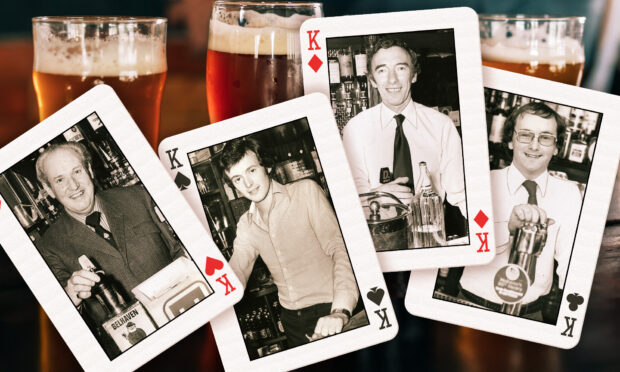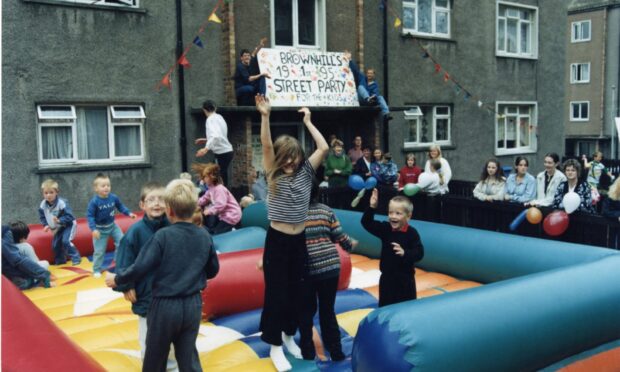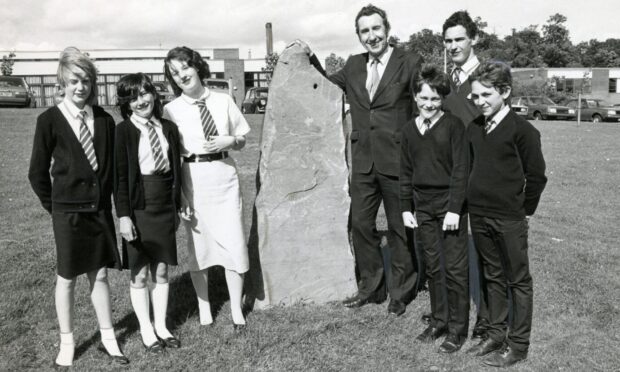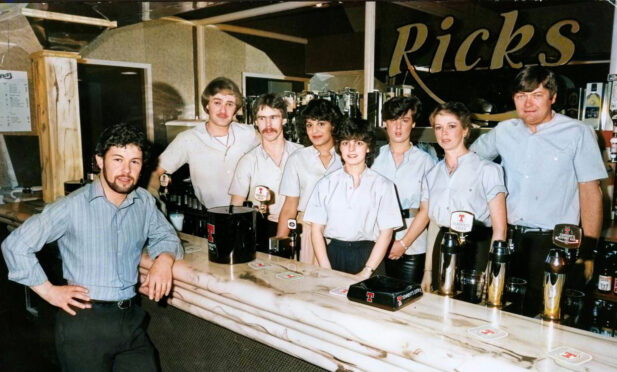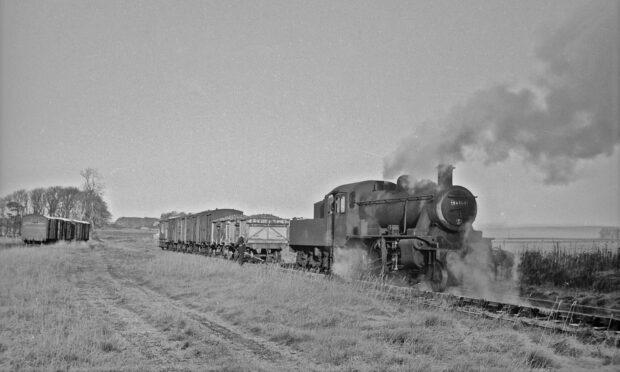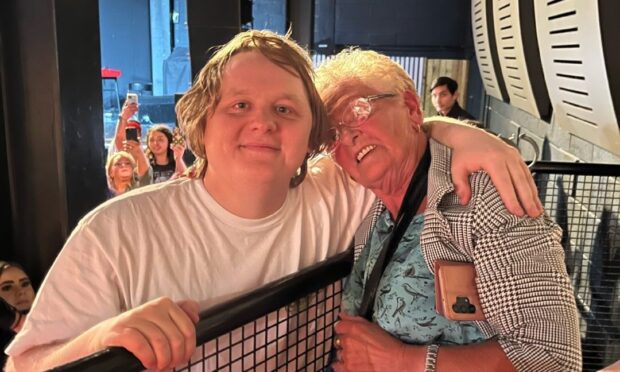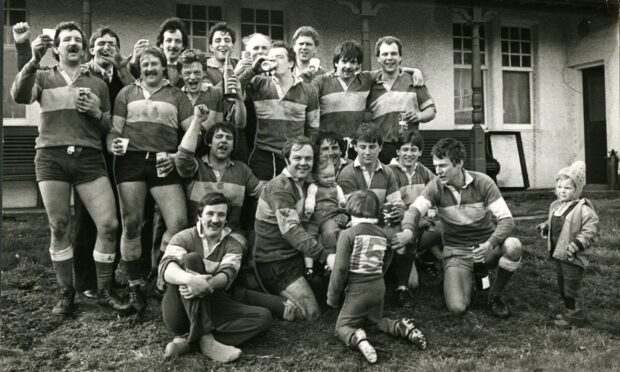It’s the world’s highest hedge – an arboreal treasure once classed as one of the seven wonders of the world.
Planted at the time of the Jacobite rebellion in 1745, the Meikleour Beech Hedge is a memorial to many a warrior who fell at Culloden.
For a third of a mile along the River Isla to the pretty Perthshire village of Meikleour, the road is skirted by the towering hedge, which marks its 275th birthday this year.
Recognised by the Guinness Book of Records as the tallest hedge in the world, it’s now on borrowed time, for the life expectancy of a beech hedge is between 180 and 200 years.
If the Meikleour Hedge is to continue to thrive, it needs to be pruned back – at vast expense – every few years.
At 110ft high and one third of a mile long, it’s a difficult and dangerous task.
In the early summer, when the foliage has a delicate green colour, or in the autumn when the leaves change to gold, the hedge is a picture of breathtaking beauty.
It’s no surprise, therefore, that the famous hedge has been a magnet for tourists for almost three centuries.
Uprising
In 1745, Robert Murray Nairne and his wife, Jean Mercer of Meikleour, began to plant a beech hedge to mark a boundary on Meikleour estate.
Robert – a staunch supporter of Bonnie Prince Charlie– answered the call to arms and joined the prince’s column on the march to Inverness, leaving the planting unfinished.
Some of the men working on planting the hedge – and a dyke to protect it – followed in the laird’s footsteps and left to fight in the Battle of Culloden.
Many of them, including Robert, fell on the bloody battlefield and never returned to Meikleour.
The hedge was left to grow freely as a living monument to their memory.
According to legend, the reason it is so tall is because it’s reaching up to the heavens.
Peep through the hedge
A book, Peep Through the Beech Hedge and find Meikleour, was published in 2015, with many old photographs of the hedge and the village.
The book relates the history of the village smiddy, the school, the former coaching inn now called Meikleour Arms, the estate and tales of the past including a couthy character called “Clootie Jean”.
It was written after a fourth generation member of the blacksmiths of Meikleour got in touch with local historian Margaret Laing.
“Arthur Barty, who was the queen mother’s chauffeur for 27 years, was brought up in Meikleour and had a wealth of information and old photographs about the village,” said Margaret, 91.
“I was fascinated and started doing loads of research and looked at old records. This resulted in the book.”
Margaret, who used to work part-time in school libraries, has six books to her credit and is currently researching the history of Meigle.
Profits from sales of Peep Through the Beech Hedge have been donated to the charity Help for Heroes.
Hedge tales
There are many stories associated with the hedge, and Margaret delights in re-telling them.
“A traveller’s tale relates how a poor woman camping near Meikleour, and was expecting a baby, asked her husband to take her to a doctor in Blairgowrie,” she said.
“As she reached the beech hedge, she was desperately thirsty and asked her husband for a drink of water.
“He looked around and to his surprise, found a well in the middle of the hedge that had never been seen before. After his wife drank from it, it was never seen again.”
Carvings
Margaret discovered that troops of soldiers who worked in the grounds of Meikleour carved their names into the beech hedge’s branches when they were bored.
“After the Battle of Culloden, those who came back could see the names of friends who had died,” she explained.
“Even to this day, those names are still carved into the hedge. It’s a unique, living memorial.”
Short, back and sides
In the 1930s, the Meikleour Hedge was considered to be one of the seven arboreal wonders of the world.
The huge shrubbery, not only recognised as the highest in the world but as the longest in Britain, used to be pruned about once every 10 years to keep it in tip-top condition.
However, it 2018, it hadn’t been trimmed for almost two decades.
The Mercer Nairne family, who own the land, revealed that the estimated bill for the work – including traffic management – would come to around £90,000.
Perth and Kinross Council agreed to step in to support the six-week operation in November last year.
The work was carried out by a team led by Meikleour Estate’s Chic Fleming, whose grandfather trimmed the same hedge in the 1930s.
Crews got to work on the mammoth using chainsaws and an 85ft hydraulic platform.
Salvaged wood cuttings were transformed into objects by woodwork artists, and there are plans to sell these off for charities including Angling For Youth and Countryside Learning Scotland, which are both championed by the Meikleour Estate.
In the 1970s, the hedge was pruned by a machine which included a double ladder modelled on one used in the gardens of Versailles.
A report in The Courier in 1976 stated: “One of the foresters climbs as near to the top as possible, fastening himself to the strongest branch he can find by means of a belt round his waist and another with his left hand.
“With his right hand he wields a light billhook reaching to a height of 75ft which is as high as can be trimmed with safety.”
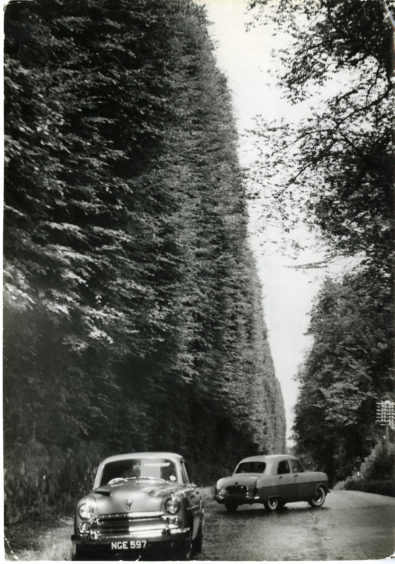
Magic of Meikleour
Meikleour is fortunate in that it has remained much as it was in the 19th century.
“It has an amazing amount of listed buildings – even the telephone box is listed!” said Margaret.
“Everyone knows of the beech hedge but how many people know the part Kinclaven Castle, (now ruined, but captured by William Wallace in 1297) played in Scottish history?
“And how many are aware that the Cleaven Dyke is one of the most important, ancient monuments in Western Europe?
“It was built between two bends in the river and some think it might be an ancient ceremonial or burial site.”
The dyke is described as a massive linear earthwork running for more than a mile, comprising a pair of parallel ditches some 50m apart, either side of a central mound.
It is of a type of ancient feature known as “cursus monuments” – Neolithic structures which date back to around 3000BC.
Ancient village
At one time, Meikleour was the centre of a big Roman camp, of which the fortifications are still visible at the Cleaven Dyke and elsewhere.
In the centre of the village stands the Mercat Cross, dated 1698.
Nearby, in the Meikleour House policies, is a “tron” (weighing beam) – a link with the days when Meikleour was the commercial centre for a wide district.
Markets were held periodically in the Perthshire village, but the great day was the fourth Friday of June, when an annual fair, now long discontinued, attracted buyers and sellers from all parts of the country.
The original tron, or stone pillar, stood near the centre of the village and was used for weighing wool and other bulky country produce, the scales being suspended from a wooden shaft.
The tron had another fascinating use. Attached to it were the “jougs”, or iron neck ring, in which delinquents were pilloried while they did penance for offences.
A short chain attached to a collar which could be fixed around a criminal’s neck as a type of stocks.
The original tron was damaged in 1832 but was replaced shortly afterwards and continues to attract the attention of wayfarers.
Meikleour Arms: 200th anniversary
The Meikleour Arms (previously called the Meikleour Hotel) was built in 1820 as a coaching and posting house, where the Inverness to Edinburgh coaches would stop to change their horses and refresh their passengers.
It was later converted into a lodge used by fishing and shooting guests of the Meikleour Estate, before becoming a hotel, restaurant and bar.
Plans to mark its 200th anniversary have thus far been put on hold as a result of the coronavirus pandemic.
Mercer family
The Mercer family, who purchased the lands of Meikleour in 1162, were active in Perth’s civic and business life from the 11th to the 17th century.
Meikleour House was built in 1734 by Robert Murray Nairne and his wife Jean Mercer of Meikleour, heiress of the estates of Aldie and Meikleour.
They were responsible for the plan to plant the Meikleour hedge in 1745, shortly before Nairne was killed at the Battle of Culloden.
Jean Mercer left Meikleour to seek refuge and anonymity in Edinburgh.
However, her son returned, dying at Meikleour in 1758, and her heirs have remained there ever since.
The house was remodelled in the form of a French château in 1870 by the architect David Bryce.
It was used as a maternity hospital during the Second World War and is said to be haunted by a young lady whose skirts rustle.
It is currently lived in by Sam and Claire Mercer Nairne.
